
With so many damaged plants sap is spilling out onto the ground and getting a lot of attention. Prenolepis imparis, The Winter Ant, was one of many species stocking up on the sweet sugary food. Sugars store better and are vital to a colonies survival over the winter.
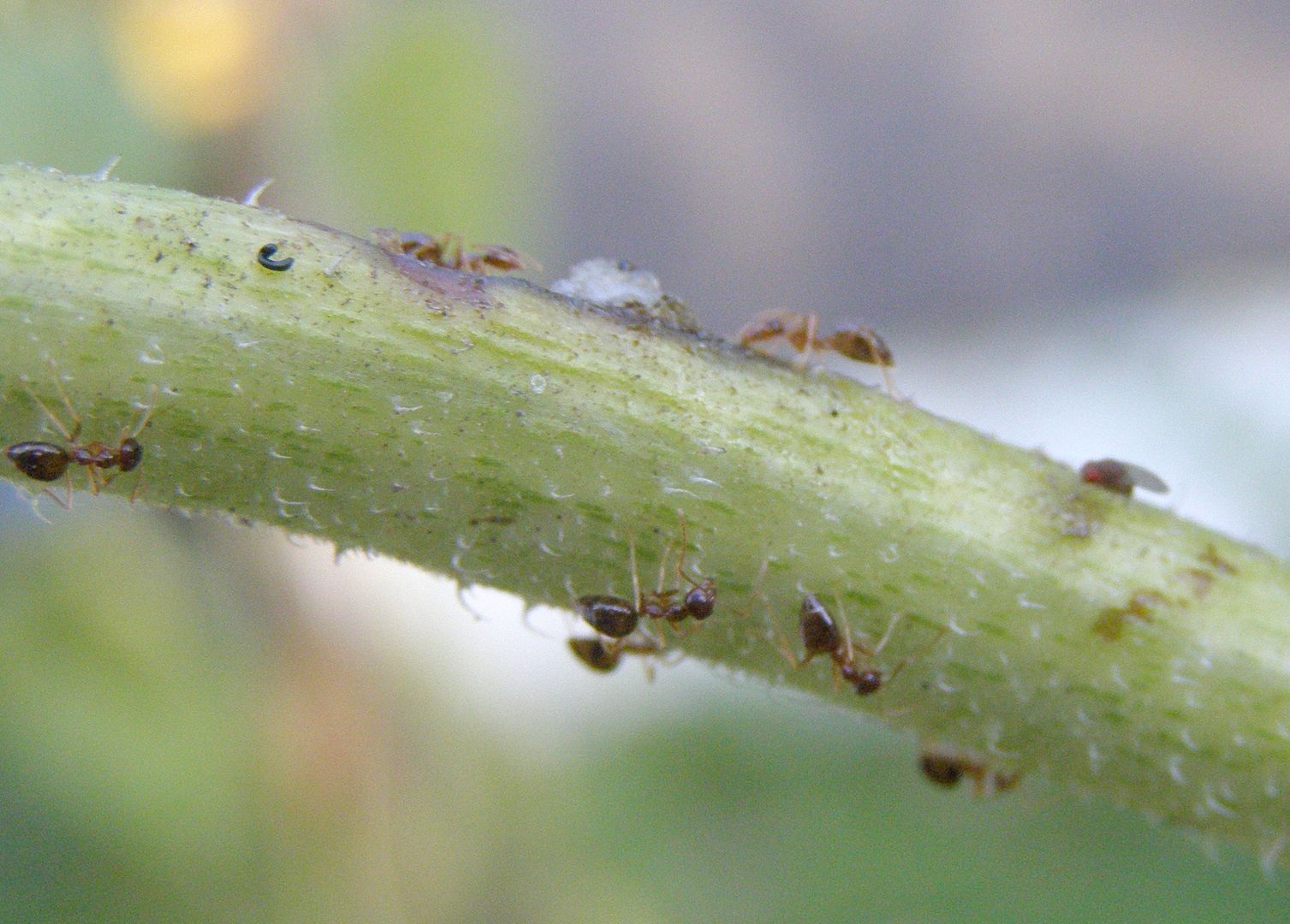
There's a friendly foraging war going on as some individual sunflowers are better producers than others. Wasps and flies are darting around licking everywhere. But the ants are more interested in the sap to deal with them.
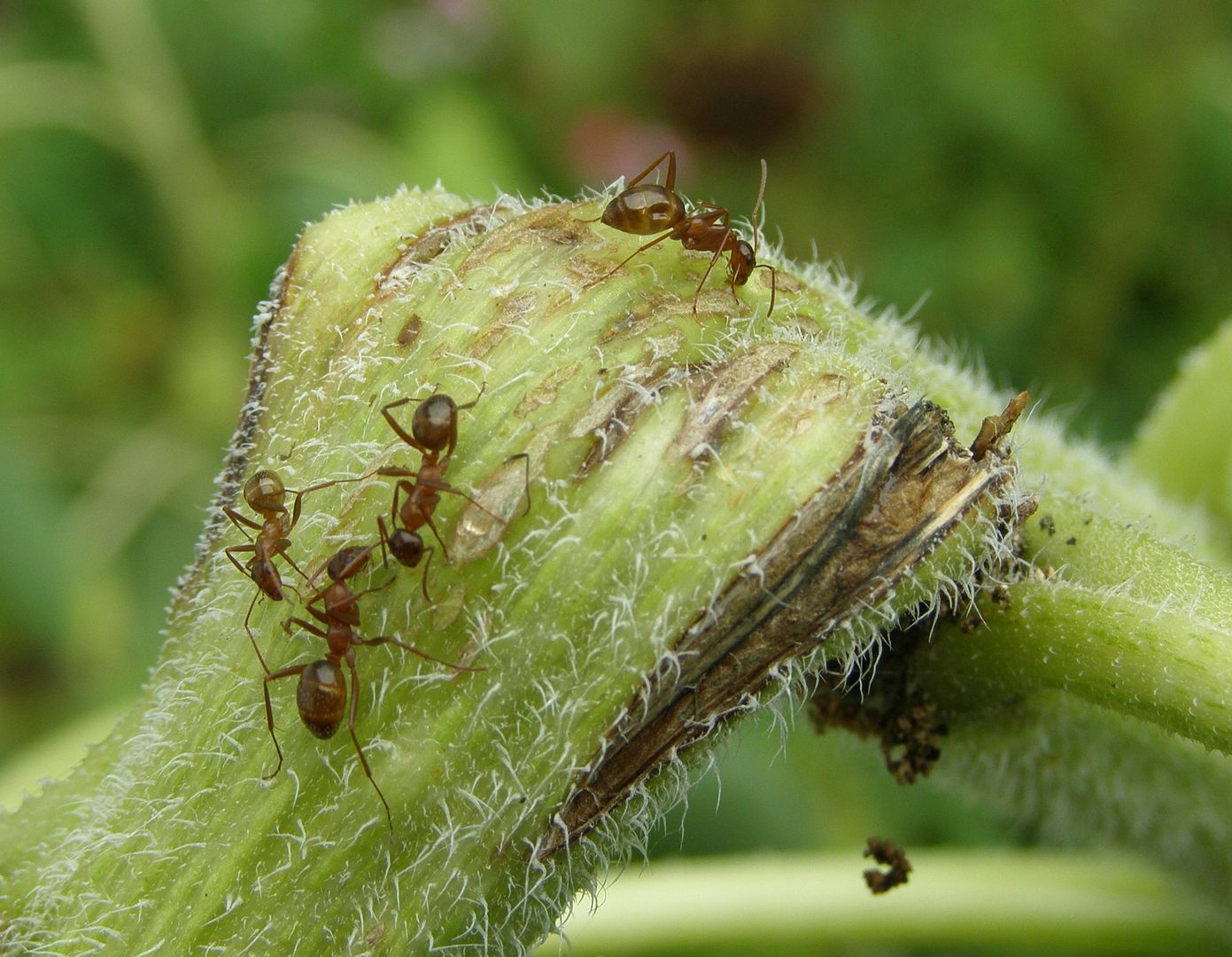
At some times of the day a common Formica species has control of what I believe is the hot spot of the sap flow. But there's no real conflict over the resource.
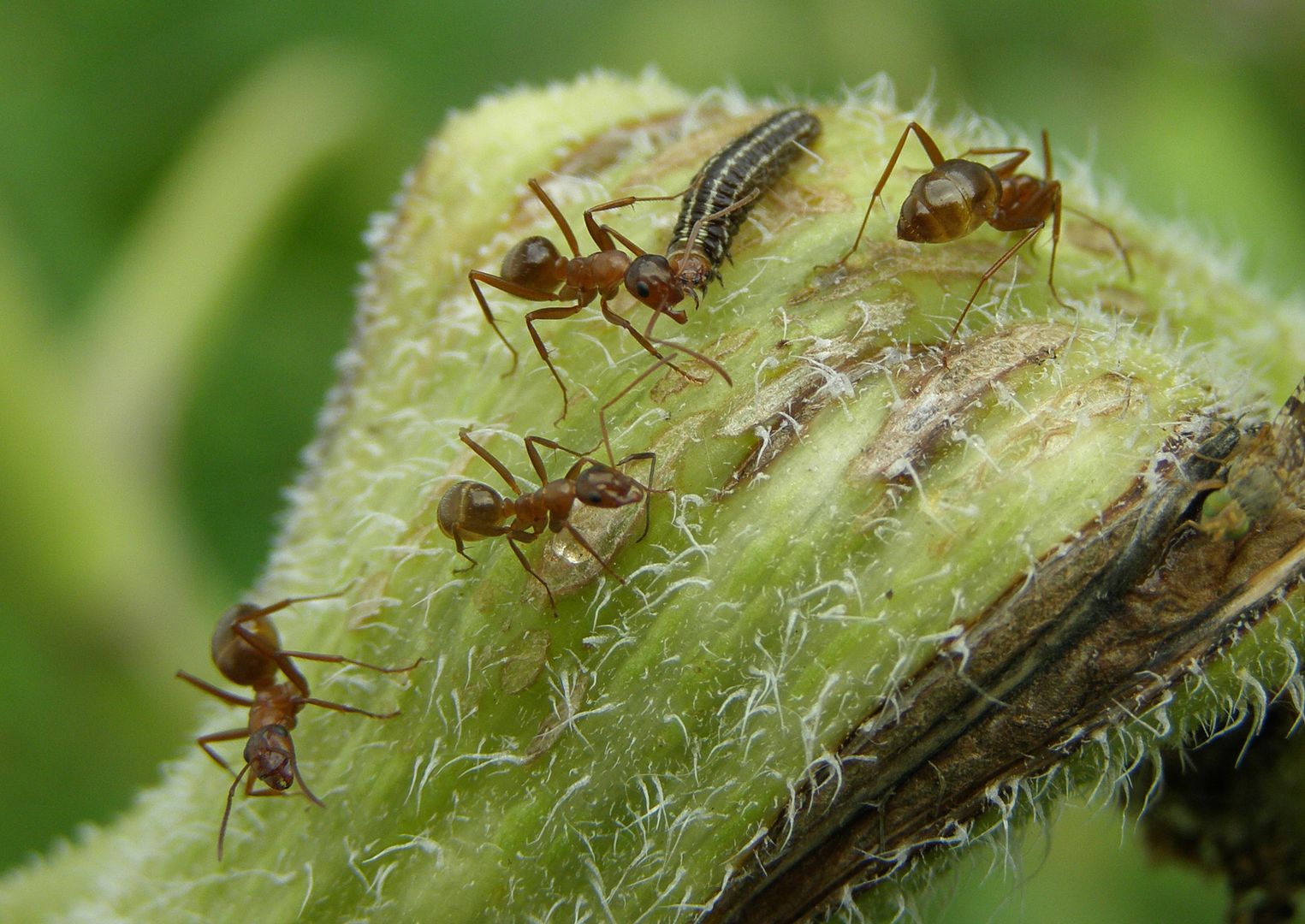
Even when a caterpillar crawls out from within the hollow stem the ants pay it no mind. They bite at it in an aggressive stance and send it on it's way rather than eating it. Formica colonies currently have no brood in the nest, as they don't keep brood over the winter. The larvae are used to digest solid foods so the ants have no use for caterpillars at this time.
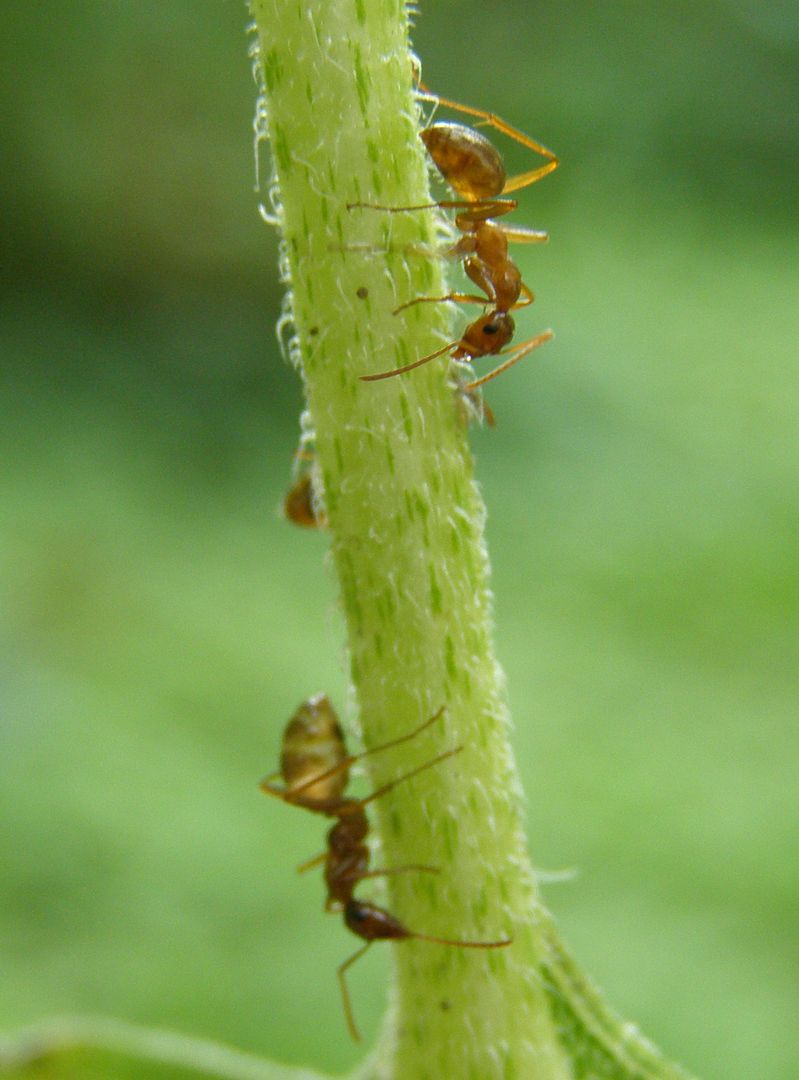
Workers gorge themselves to the point where their abdomens become transparent.
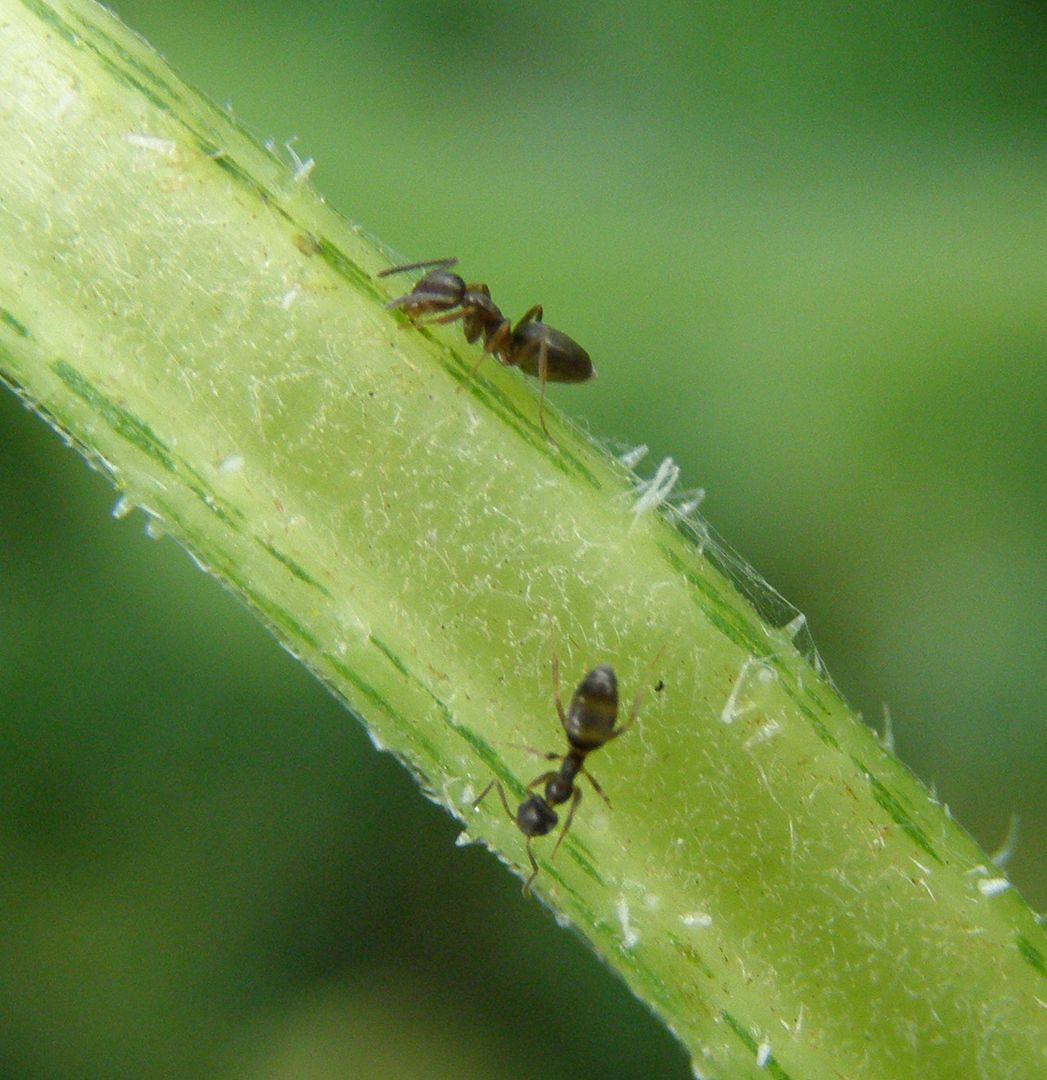
Tapinoma sessile, The Odorous House Ant, was also present but not a lot. Because they don't have what I would call a true replete caste workers can only carry small amounts of food.